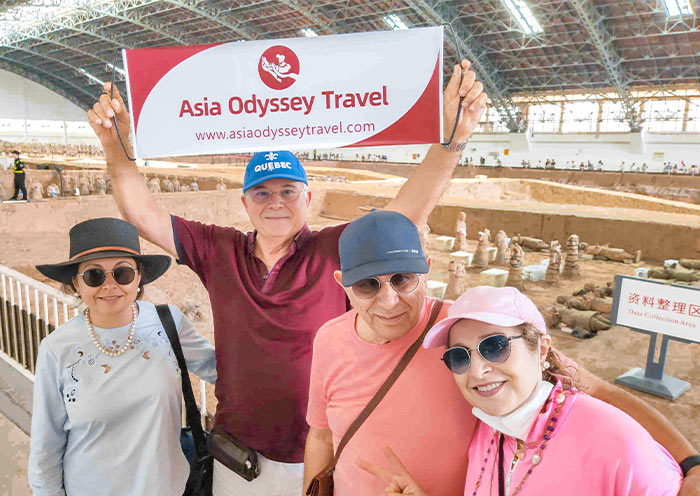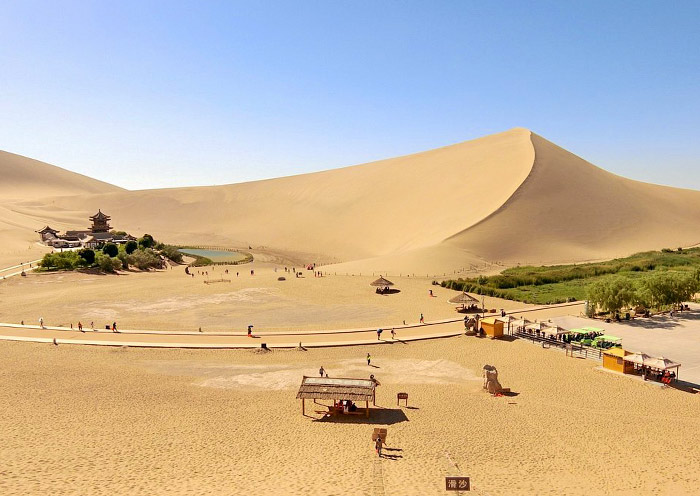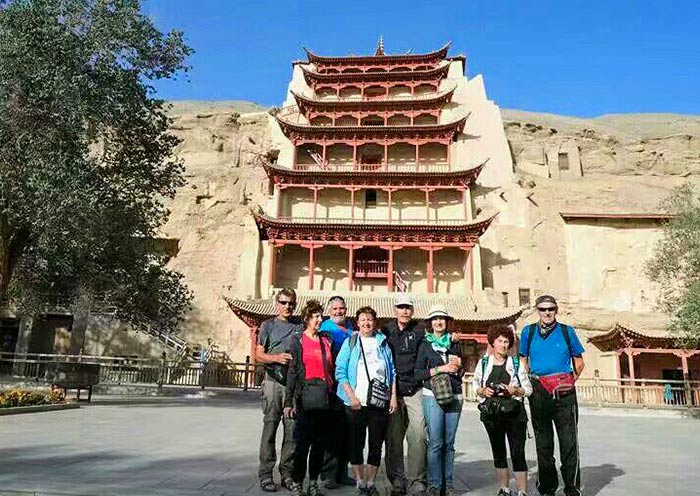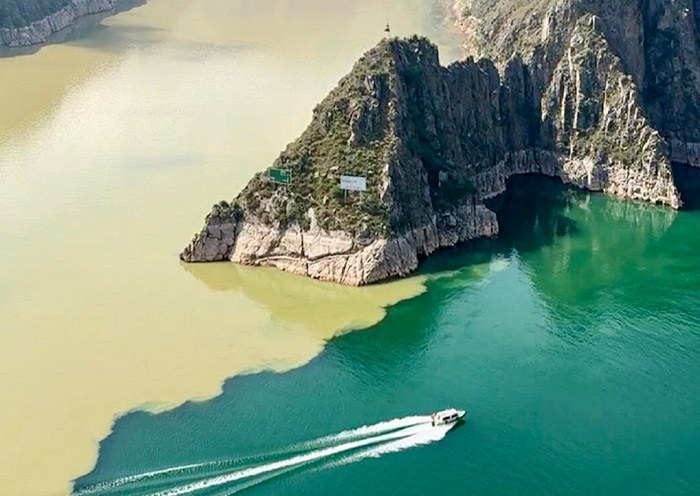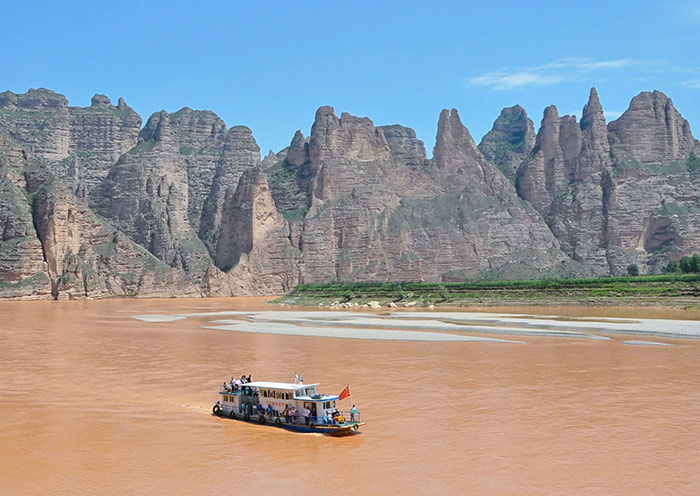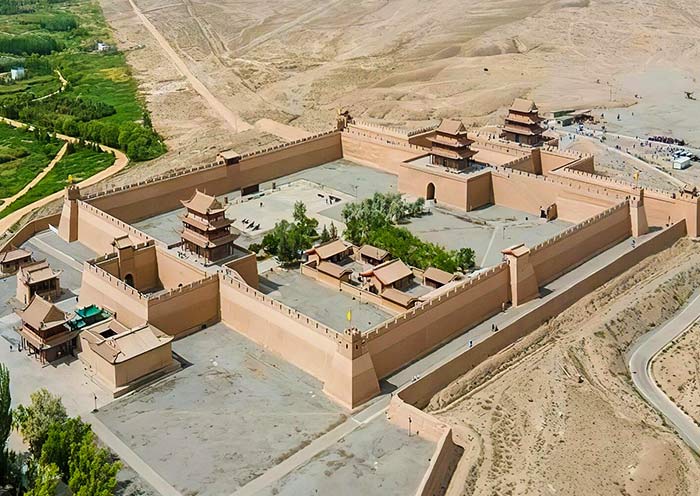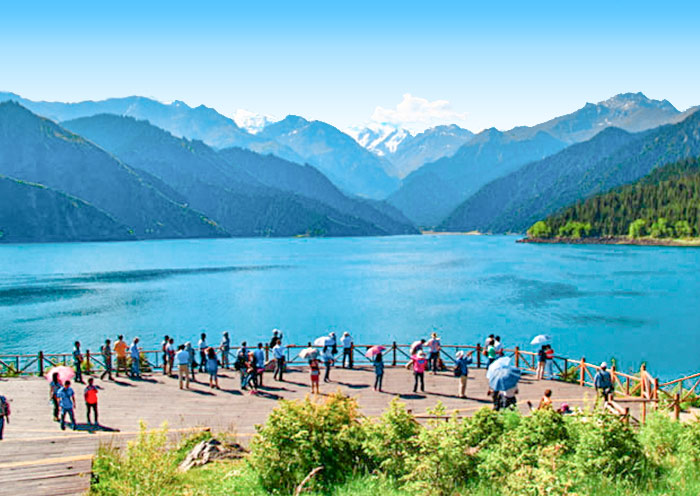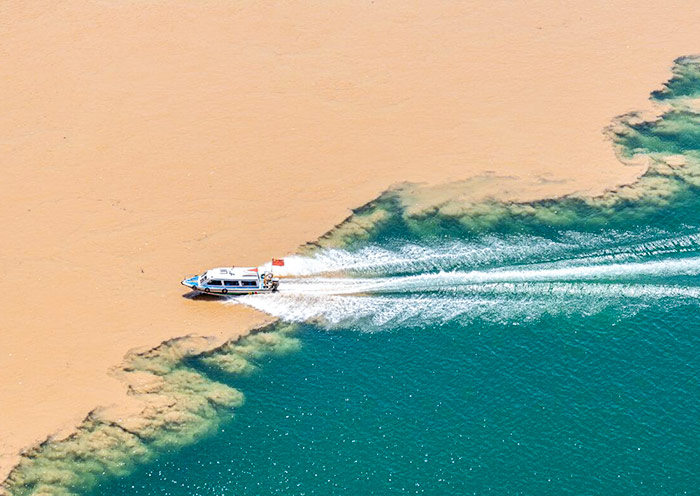Our 8 days group tour in December was amazing! Tokyo’s vibrant streets and Mount Fuji’s snow-capped beauty were breathtaking. Kyoto’s temples and Nara’s deer park offered a serene charm, while Osaka dazzled with its food and nightlife. Hiroshima’s Peace Memorial Park was deeply moving. The crisp winter atmosphere and festive illuminations added a magical touch. Traveling with a small group made the experience fun, seamless, and unforgettable!
5 Days Xian Dunhuang Tour: Splendor of Tang Dynasty & Ancient China
- Highlights
- Itinerary
- Price
- Trip Notes
- Accommodation
- Photos
- Reviews
China Silk Road Tour: From Terracotta Warriors to Mogao Grottoes
Why Xian Dunhuang Tour? Xi'an, the ancient capital of China (Chang'an), is often regarded as the starting point of the Silk Road. Dunhuang's significance as a key point along the Silk Road. Take our 5 Days Xian Dunhuang Tour to explore the Splendor of Tang Dynasty & Ancient China. From the Terracotta Warriors to the Mogao Grottoes, our China Silk Road Tour to Xi'an & Dunhuang offers an unforgettable journey through time and culture.
Xi'an was the seat of power for 13 dynasties over over a thousand years. In addition to the Terracotta Warriors (World Heritage), you will explore the Ancient City Wall, Muslim Quarter, Grand Tang Dynasty Ever Bright City, and the Giant Wild Goose Pagoda, which mirrors the glory of the Tang Dynasty. Now people like to say when night descends, Xi'an transforms into Chang'an, reflecting the splendor of the Tang Dynasty - a golden era in China's history. Dunhuang is a must-visit destination on a China Silk Road Tour due to the amazing Mogao Caves (World Heritage). The finest murals and intricate sculptures in the Mogao Caves are generally attributed to the Tang Dynasty (618-907 AD), which is considered the golden age of Chinese art and culture.
Take our 5 Days Xi'an Dunhuang Tour to journey back to the Splendor of the Tang Dynasty and Ancient China. Trace the footsteps of traders, travelers, and pilgrims who once traversed the routes to Xi'an and Dunhuang, immersing yourself in the rich tapestry of Silk Road culture.
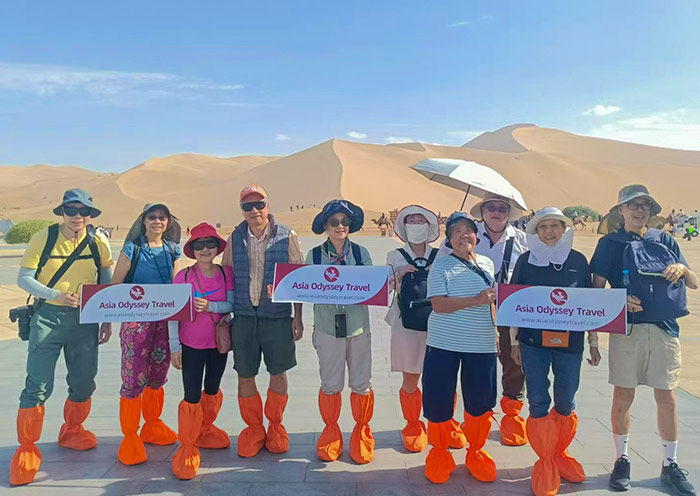
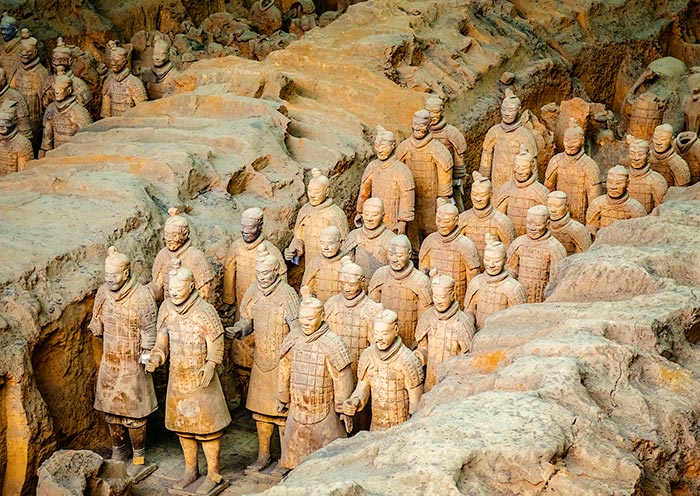
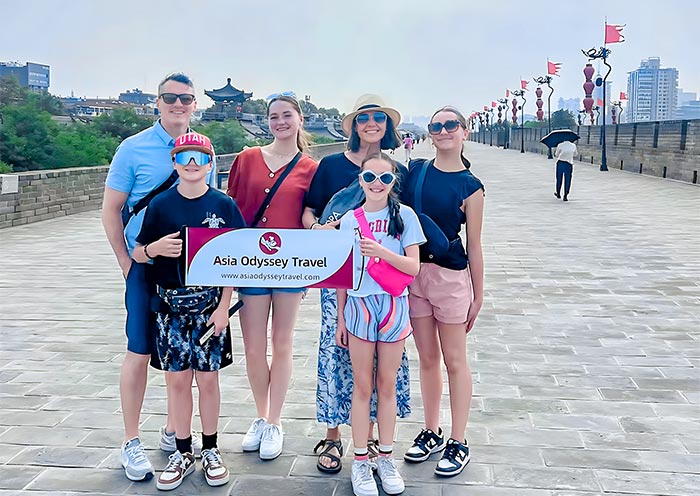
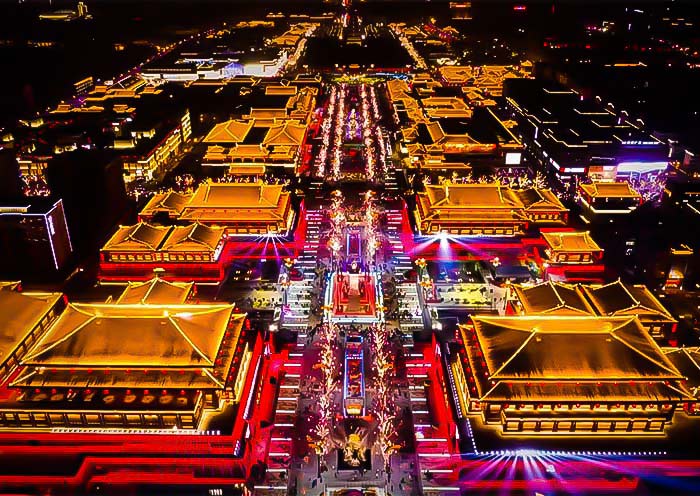


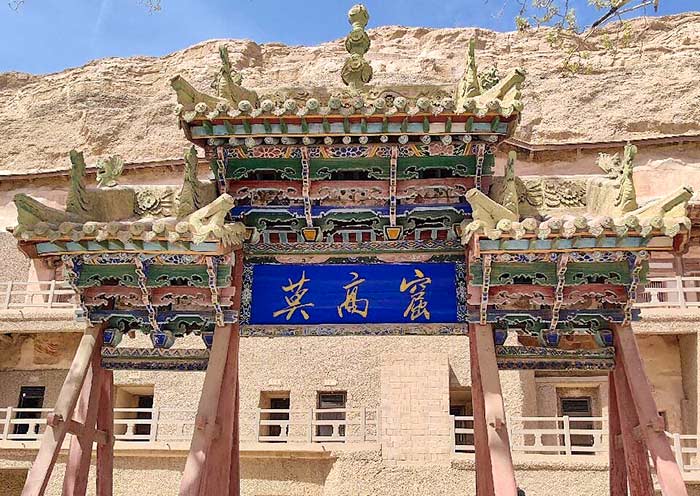
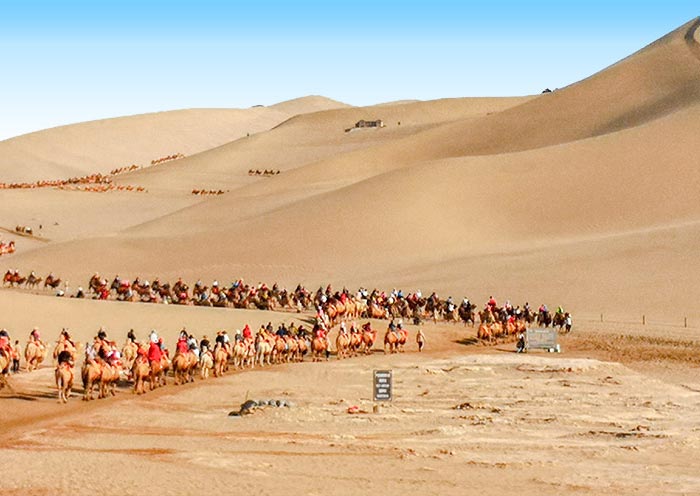
Itinerary at a Glance
Xi'an (2.5 Days)
Terracotta Warriors Museum, Make Miniature Terracotta Warrior, Ancient City Wall, Muslim Quarter, Great Mosque, Grand Tang Dynasty Ever Bright City, Giant Wild Goose Pagoda, Han-style Outfits Experience
Dunhuang (2.5 Days)
Mogao Grottoes (World Heritage), Dunhuang Museum (Optional), Singing Sand Dunes & Crescent Spring, Dunhuang Shazhou Night Market (Optional)
Itinerary Day by Day
Nihao! Welcome to Xi’an, which served as the capital for 13 dynasties! Upon your arrival at the airport/train station in Xi’an, the tour guide and driver will meet and greet you at the exit, and then drive back downtown to visit the Ancient City Wall. Xi'an is one of the few cities in China where the imposing old city walls still stand. Built in 1370 during the Ming dynasty, the magnificent 12-meter-high walls, form a rectangle with a perimeter of 14 kilometers. To get an idea of Xi'an's former grandeur, take a leisurely walk on the wall. Each step here is a chance to resonate with the echoes of history that the stones reverberate. Or cycling (optional ) the full extent of the wall offers a rewarding panoramic view of the city - a tangible contrast between the old and new, and a testament to Xi'an's historical significance and modern vibrancy. Once you've delved into the city's historical narrative, don't forget to indulge in the delicious food and experience the vivid local life. The Muslim Quarter is a paradise mixed with different local snacks and Muslim culture, and you can surely taste the most authentic local food there. Don't miss the Great Mosque, an architectural gem that beautifully blends Islamic and Chinese design styles. After the tour, you will be escorted to a well-selected hotel in downtown Xi'an. The rest of the day is free for you to either rest and recover from jet lag or explore the area around your hotel on your own.
Optional activities:
1). Rent a bike cycling on the Ancient City Wall;
2). Enjoy a wonderful Tang Palace Dance Show with or without Dumpling Banquet.
Arrival Ideas:
Xi'an is well-connected by air and train. The city is served by Xi'an Xi'anyang International Airport, which offers domestic and international flights. You can easily reach Xi'an by air from major cities in China as well as from international destinations. Additionally, Xi'an is a major transportation hub with high-speed train connections to cities such as Beijing (4-5.5 hours), Shanghai (6-7 hours), Guangzhou (8.5-9 hours), Hangzhou (7-8 hours), Pingyao (3 hours), Chengdu (4 hours), etc, allowing for convenient travel.

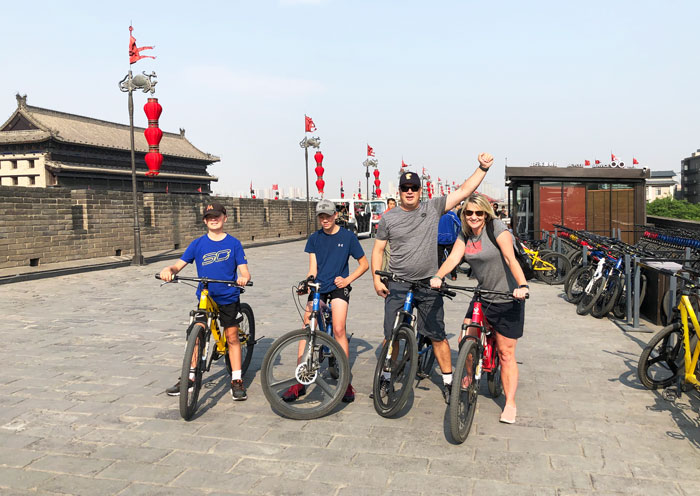


After breakfast, drive about 40 km to the Terracotta Warriors Museum (Museum of Qin Terra-cotta Warriors and Horses). Here, you can discover the Terracotta Warriors and Horses: an army of around 8,000 soldiers, 130 chariots, 520 horses, and 150 cavalry entirely made of baked clay or terracotta. This Terracotta Army has silently stood guard over the soul of China's first emperor, Qin Shihuang, for more than 2,000 years. Until an accidental local farmer digging a well in 1974 struck upon one of the greatest archaeological discoveries in the world. Upon stepping into this "underground military museum," you will encounter two awe-inspiring shocks. The first is the magnitude of the archaeological marvel before you: thousands of life-sized clay soldiers, horses, and chariots arranged in battle formations. The second shock is that the faces of thousands of Terracotta Warriors are still vivid, despite the passage of more than 2,000 years. Each figure is unique, with distinct postures, hairstyles, and armor, making them seem to come back to life in the next moment.
During your visit, an knowledgeable guide can take you to highlights of the museum, including Pit One, Pit Two, Pit Three and provide valued explanations and insights that you might not get from simply observing the sculptures on your own. Afterward, you will have a rare opportunity to create your own miniature Terracotta Warrior under the guidance of a local potter. This will allow you to appreciate the craftsmanship and techniques of the Qin Dynasty as well as gain a deeper understanding of how terracotta warriors were made.
After lunch, drive back downtown to visit the Giant Wild Goose Pagoda which is one of Xi'an's most recognizable landmarks and a symbol of the magnificence of the Tang Dynasty. This seven-story pagoda, standing in the tranquil Da Ci'en Temple, is one of China's best examples of a Tang-style pagoda (squarish rather than round). It was completed in AD 652 to house Buddhist sutras brought back from India by the monk Xuan Zang. His travels inspired one of the best-known works of Chinese literature, Journey to the West. While at the Giant Wild Goose Pagoda, you'll also have the opportunity to immerse yourself in the local culture by trying on Hanfu (traditional Chinese clothing), and capture memorable moments in Hanfu.
As evening falls, visit the Grand Tang Dynasty Ever Bright City which showcases the life and times of the Tang Dynasty. The light show is decorated with structures, creating a vibrant and immersive atmosphere that transports you back to the times of the Tang Dynasty, providing a magical experience of walking through time.

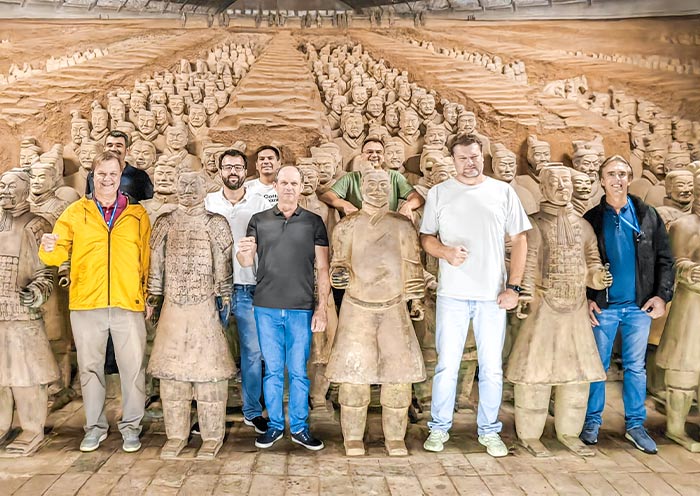

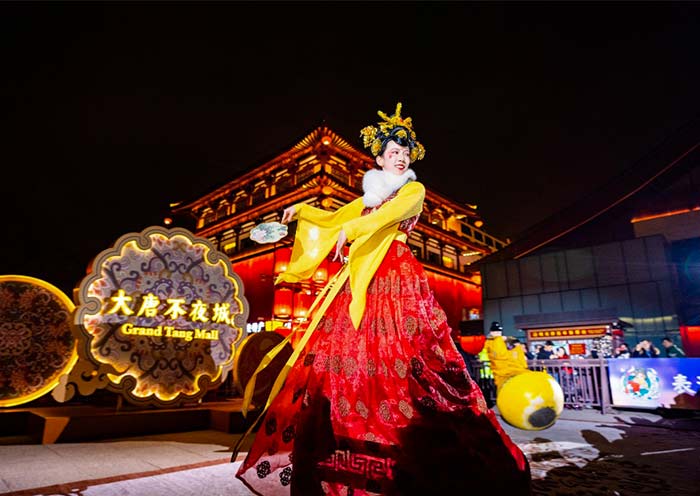
Welcome to Dunhuang, a must-visit city located in the Gansu province of China! Upon arrival in Dunhang, your guide will meet you at the airport or train station and escort you to your hotel. You can explore on your own based on your arrival time. Feel free to seek travel ideas from your tour guide.
Dunhuang, a city in Jiuquan (酒泉市), which was formerly known as Suzhou (肃州), is the birthplace of the "su" character in Gansu Province (甘肃的“肃”). Dunhuang is a desert oasis of ancient wonders. Discover the hidden gems of China's western frontier. Explore the breathtaking Mogao Caves, a UNESCO World Heritage Site adorned with vibrant murals and intricate sculptures. Trek through the Gobi Desert, marveling at the Crescent Lake's turquoise waters and towering sand dunes. From stargazing under pristine skies to experiencing the thrill of sandboarding, and camel riding, Dunhuang offers a captivating journey through time and nature. Dunhuang is also famous for Tunhuangology (敦煌学), a specialized field of study dedicated to exploring and interpreting the vast cultural and historical treasures in the Mogao Caves.
Free Time Ideas:
1. Dunhuang Museum (敦煌博物馆; Closed on Mondays; Reservation Required): It has distinctive architecture, blending cultural symbols such as the Great Wall, beacon towers, and ancient castle-style buildings in its exterior and color scheme. It houses over 13,355 cultural relics from the Neolithic period to the Ming and Qing Dynasties. The most treasured items include ink writings on hemp paper from the Western Han Dynasty (8 BC), a torch made of reeds from the Han Dynasty, and the Beiliang Stone Pagoda. Additionally, there is a 1:1 replica cave of Cave 45 (Tang Dynasty; 8th century) from the Mogao Caves, allowing you more time to admire and photograph the replicas up close.
2. Dunhuang Shazhou Night Market (敦煌沙洲夜市) for Dunhuang food. There are many distinctive snacks that you must try, such as Apricot Skin Water (杏皮水), Donkey Meat Noodles (驴肉黄面), and Bubble Oil Cakes (泡儿油糕). The locals in Dunhuang enjoy eating lamb, chicken, and beef, and they are good at noodle making.
Arrival Ideas:
1. Get to Dunhuang from Xian By Air: Dunhuang Mogao International Airport (敦煌莫高国际机场; or Dunhuang Airport) is located about 13 km from city center and 22 km from the Mogao Caves. Direct flights connect Dunhuang with Xian (2h 40min). It's essential to check flight schedules in advance, as not all routes operate year-round.
2. Get to Dunhuang from Xian By High speed Train: Liuyuan Railway Station, around 130 km from downtown Dunhuang, provides high-speed trains to Xian (9 hrs). It's essential to check tickets in advance, as it may not operate year-round.


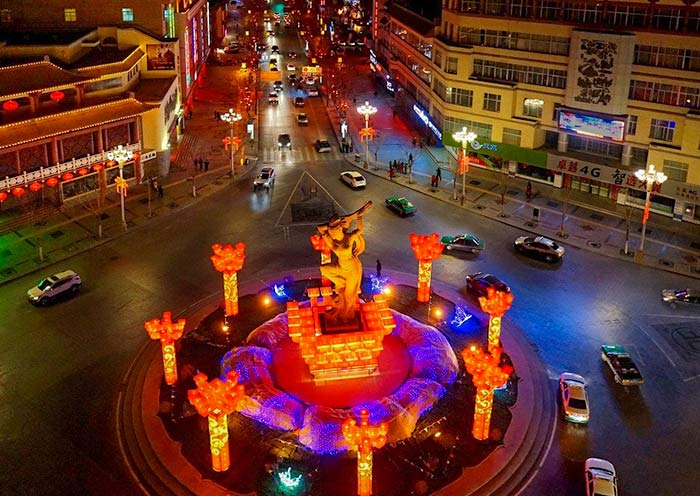
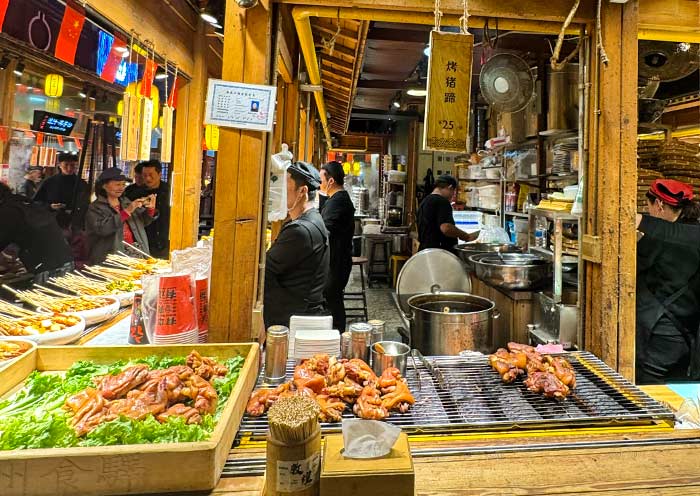
Today, you will enjoy a wonderful Dunhuang Culture Tour by visiting Mogao Grottoes (4-4.5hrs), a UNESCO World Heritage site. You can enjoy the relaxing time in Echoing Sand Mountain & Crescent Lake, don’t miss the delicious food at the Shazhou Night Market.
Dunhuang Mogao Grottoes is the must-visit place for a trip to Gansu. You may read many stories about A. Stein (斯坦因a British archaeologist and explorer) and the vast trove of artifacts (Paintings, Sculptures, Manuscripts) he brought from the Mogao Grottoes in the early 20th century. You may have already seen the artifacts Stein collected in the British Museum in London. Or you may have heard of Paul Pelliot (French archaeologist & Sinologist) who like A. Stein, conducted several expeditions to Dunhuang and collected a large number of artifacts which is primarily housed in the Guimet Museum in Paris, France. Welcome to visit Mogao Grottoes the source of the world famous Dunhuang Manuscripts (Dunhuang Yi shu敦煌遗书; Cave 16-17) and explore valuable insights into the history and culture of the Silk Road.
The Mogao Caves (Mogao Grottoes莫高窟), also known as the Thousand Buddha Grottoes (千佛洞), are acclaimed as the "Treasure House of Eastern Art东方艺术宝库." The remaining 735 caves are dotted along cliffs rising about 15-30 m high and over 1,700 m, forming a magnificent spectacle of this world cultural heritage site. Despite the significant loss of artifacts to oversea museums, the Mogao Caves remain one of the world's largest and most richly endowed repositories of Buddhist art. Spanning sixteen kingdoms, Northern Wei, Western Wei, Northern Zhou, Sui, Tang, Five Dynasties, Song, and Western Xia dynasties, the construction of the Mogao Grottoes lasted for over a thousand years until the Yuan Dynasty, resulting in about 45,000 ㎡ murals and 2,415 clay sculptures. In the year 366 AD, the first cave of the Mogao Caves was carved into the cliff by the Monk Le Zun (乐僔; over 1,650 years ago). In the 7th century, Xuanzang (唐僧) translated numerous Buddhist scriptures at the Mogao Caves. In 1900, Daoist Wang (王圆箓) discovered the Library Cave (藏经洞; Sutra Cave; Cave 16). From 1941 to 1943, Zhang Daqian (张大千), a prodigious Chinese artist of the twentieth century, copied 276 murals here.
At the Mogao Caves, you can explore various types of grottoes (large statue caves, Nirvana caves, central pillar caves, vaulted ceiling caves, hall caves) and learn about the pigments used by ancient artists in painting murals (cinnabar, orpiment, azurite, mica, gamboge, gold leaf, shell powder). You can admire narrative paintings of Buddhist themes (the life of Shakyamuni Buddha, the Nine-Colored Deer Sacrificing Itself to Save Others), diverse clay sculptures (Buddha statues, Bodhisattva figures, guardians, deities), Flying Apsaras (飞天) and Swirling Dances (Sema; 胡旋舞) in the prosperous Tang Dynasty, as well as the attire and customs of patrons from various dynasties. At the Mogao Caves, you can witness the brilliance and charm of the ancient Silk Road and the efforts and achievements of generations of cultural heritage preservation workers and researchers (such as Chang Shuhong常书鸿, a Chinese painter known as the "guardian of Dunhuang"敦煌守护神).
You can start at the Mogao Caves Digital Center (莫高窟数字中心), watch a 40-minute digital film, and then take a shuttle bus to the caves. Guided by the site interpreters, you will visit 8 caves sequentially (Ticket A; no photography allowed inside the caves). You may have the chance to see significant caves like the Library Cave (Caves 16-17; the largest cave), the Nine-Storey Tower (Cave 96; one of Mogao's iconic structures; the largest Buddha statue), the Nirvana Sutra Cave (Cave 148; reclining Buddha), the Early Tang Treasures Cave (Cave 332), and the Northern Wei Masterpieces Cave (Cave 257). The actual eight caves visited may vary based on the site's conditions. If interested, you can visit the Cultural Relics Protection and Display Center (文物保护陈列中心) to see 1:1 replicas of eight special caves, including Caves 275, 249, 285, 419, 220, 217, 25, and 3 (photography allowed). After the tour, you can return to your hotel to rest after lunch.
Optional Visiting Place:
Coffee Time in Dunhuang Book Center (敦煌书局Reservation required): A popular spot in Dunhuang, a modern lifestyle aesthetic space that combines reading, cultural creativity, coffee, and events.
In the afternoon, time to visit Mingsha Mountain & Crescent Lake (鸣沙山月牙泉) and even sit on the peak of Singing Sand Dunes (1,715 m) to wait for a stunning sunset in front of the Crescent Spring. The Singing Sand Dunes & Crescent Lake is praised as “one of the Top 5 Most Beautiful Deserts in China," "China's Best Natural Landscape Tourist Destination," and "China's Most Beautiful Moon-watching Spot." It is a geological park known for the unique spectacle of mountains, springs, and sand coexisting in the desert. You can enjoy various activities (self-pay) such as camel riding, sand sliding, desert motorcycles, off-road vehicles, helicopters, gliders... You will meet people in costumes of traditional Han clothing or Flying Apsaras.
The Mingsha Mountain is named for the sound produced by the moving sands, with recorded volumes of the singing reaching up to 83 decibels. This phenomenon of sand-producing sound is one of the Dunhuang Eight Views, known as "ShalingQingming沙岭晴鸣" in the Dunhuang County Chronicles《敦煌县志》, where Dunhuang's ancient name of Shazhou (沙洲) also originates. The Singing Sand Dunes stretches from the Mogao Caves in the east to the Dang River in the west, spanning about 40 km east to west and 20 km north to south. The mountain is formed from deposits of fine sand in five colors (red, yellow, green, black, white). The sand of Mingsha Mountain is carried by the wind from the Gobi Desert and the Kumtag Desert to settle here, gradually accumulating over time. The Crescent Lake is nestled amidst the Mingsha Mountain, named for its crescent moon-like shape. The spring water spans 242 meters from east to west and can reach up to 50 meters wide from north to south, with an average depth of around 1.5 meters. The spring is home to the Ironback Fish (铁背鱼local fish) and Seven Star Grass (七星草; medicinal herb) which is included in the "Three Treasures of Crescent Spring月牙泉三宝" by locals (the third one is Five-colored Sand五色沙), believed to bring good luck to people. So try your luck to find them. Remarkably, the sand has not encroached upon the spring, and the water remains clear and abundant, traversing through time, creating the world wonder of the "First Spring in the Desert沙漠第一泉."
After that, you can pay a visit to Dunhuang Shazhou Night Market (敦煌沙洲夜市; Optional) for Dunhuang food. There are many distinctive snacks that you must try, such as Apricot Skin Water (杏皮水), Donkey Meat Noodles (驴肉黄面), and Bubble Oil Cakes (泡儿油糕). The locals in Dunhuang enjoy eating lamb, chicken, and beef, and they are good at noodle making.
Optional Evening Show: (Reservation Required)
1. "Ancient Sound of Dunhang《乐动敦煌》" (available year round) is the world's first cave-style immersive theatrical experience, telling the story of a young man from the Western Regions named Bai Xin in the early years of the Tang Dynasty who discovers the essence of music in the dancing murals of Dunhuang. Using modern technology and combining live performances, the performance reproduces cultural elements such as music, dance, poetry, costumes, and paintings from the Dunhuang murals.
2. "Dunhuang Celebration《敦煌盛典》" (peak season only) is the world's first large-scale desert live performance, set against the backdrop of the Crescent Lake in the Mingsha Mountain. The unique feature of a 360-degree rotating and movable audience seat enhances the tragic love story of the young painter and the princess, reimagining the former prosperity of the ancient Silk Road and showcasing the unique cultural and folk customs of Dunhuang (including "Iron Flower").
3. "Encore Dunhuang《又见敦煌》" (peak season only) is a large-scale indoor experiential drama directed by Wang Chaoge王潮歌, one of the chief directors of the 2008 Beijing Olympics. Audience members "journey" through the scripture caves, Mogao Caves, and Silk Road, experiencing Dunhuang culture and the Silk Road firsthand.
4. "Thousand-Handed, Thousand-Eyed《千手千眼》" (peak season only) is a large-scale theatrical production performed by the China Disabled People's Performing Art Troupe, showcasing the folk story of "Wonderful Kindness Saves Father." The dance movements are graceful, with deep cultural significance and extremely high artistic standards.
Notes:
1. To protect the caves, the Mogao Caves implemented a real-name reservation system for timed visits, implementing a daily limit on the number of visitors. The ticketing system includes A/Regular tickets (6,000 tickets/day) and B/Emergency tickets (12,000 tickets/day; for domestic visitors only). A Ticket includes access to 8 caves and 2 digital movies. B ticket includes access to 4 caves and the Cave Artifacts Conservation and Research Exhibition Center.
2. Visitors must follow the visiting arrangement set by the management of the Mogao Caves on the day of the visit. The visiting order of the Mingsha Mountain and the Mogao Caves is subject to change.
3. If you are particularly interested in the caves, you can also purchase tickets for special caves at the site (may require queuing) to explore more exquisite caves. The special caves (self-pay) are divided into Line 1 (Caves 45, 320, 321, 420, 9) and Line 2 (Caves 275, 45, 156, 158, 159).
4. During the Dunhuang Cultural Expo or in case of inclement weather or other factors affecting the visit, if the Mogao Caves cannot be visited as planned, our company will refund the Mogao Caves tickets according to the actual cost, or arrange a visit to the Western Thousand Buddha Caves as an alternative.
5. Optional activities in the Mingsha Mountain Scenic Area: Shoe covers; Sightseeing vehicle; Camel riding; Motorcycle; Off-road vehicle (seats 3 people); Paragliding; Helicopter (seats 3 people).
6. When participating in desert recreational activities, take care of your photographic equipment and prevent sand from entering the camera. When riding a camel, follow the staff's instructions when mounting and dismounting.

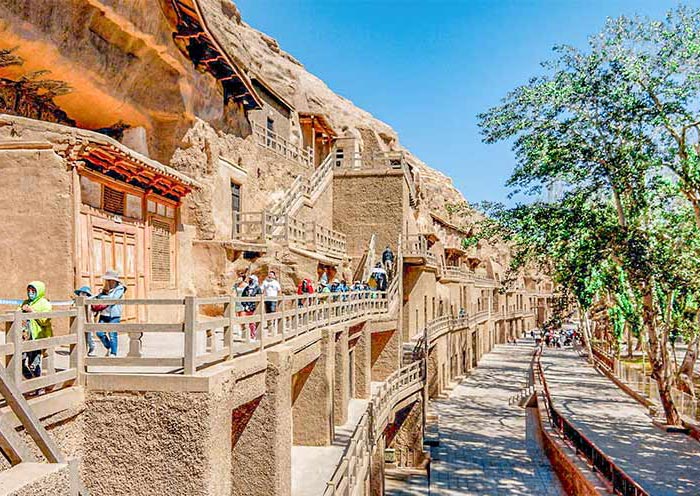
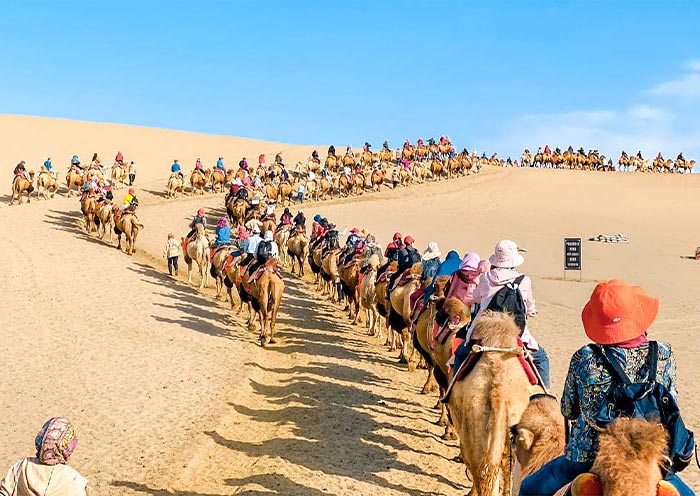

Though it is time to end your 5 Days Xian Dunhuang Tour today, you will have some free time in Dunhuang and explore more on your own till your guide escorts you to the airport for your flight to next destination.
Thank you for choosing Asia Odyssey Travel for your China Tour, and we are always here working for you and hope to see you again for your next trip to Asia. Safe journey!
Extension Ideas:
1. If you prefer to spend more time in Dunhuang, you can add a 1-2-days to include the Yulin Grottoes,Yangguan Pass, Yumenguan Pass, Yardan Landform Park, Great Wall of the Han Dynasty, Thousand Buddha Caves...
2. If you wish to extend your trip and explore other highlighted parts of Gansu, such as Zhangye, Lanzhou, Jiayuguan, Wuwei, Jiuquan, Guazhou, and more, we can help you with the arrangements.
3. If you plan to continue your exploration to other cities in China, such as Xining, Turpan, Chengdu, Lhasa, Xian, Beijing, and Shanghai, please feel free to let us know. We can customize your itinerary and assist you with travel arrangements.

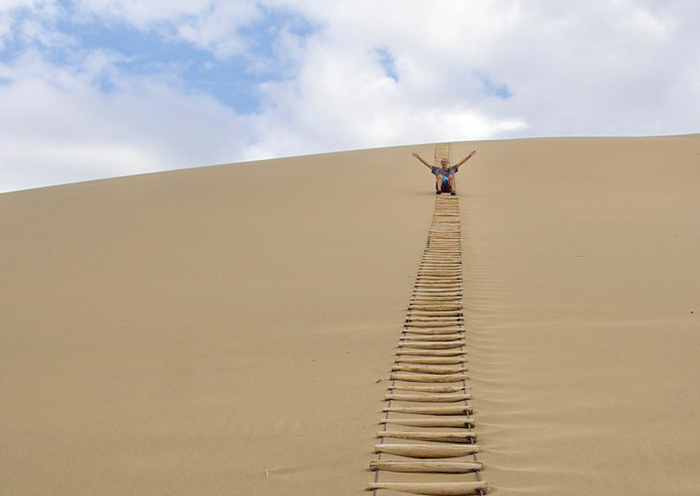
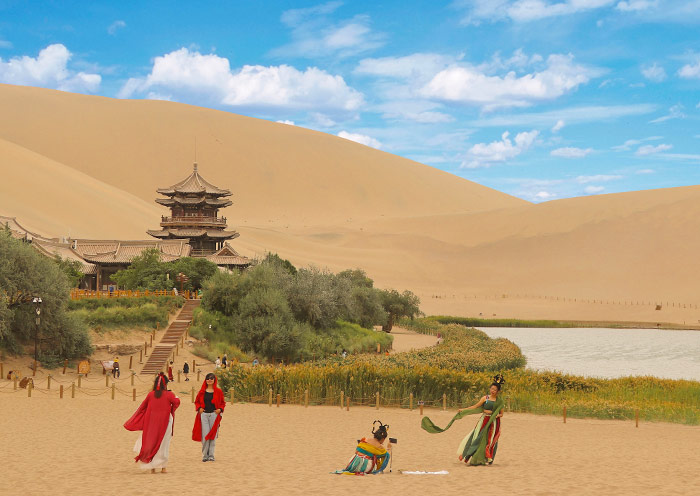
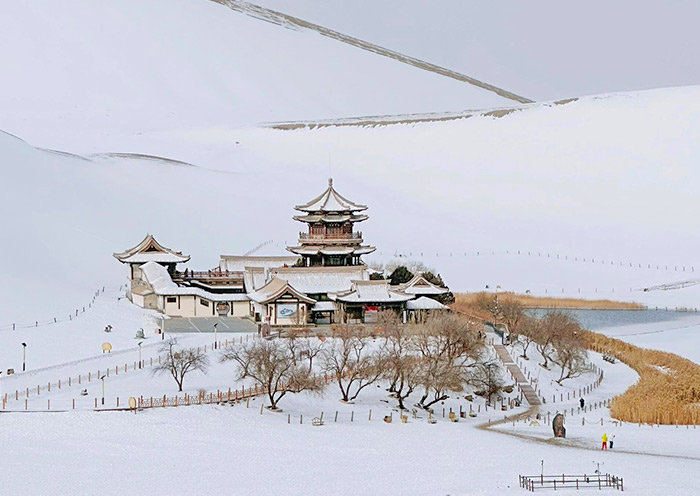
Price: What’s Included & What’s Excluded
What's Included:
What's Excluded:
Hotel Conditions for Silk Road Tours
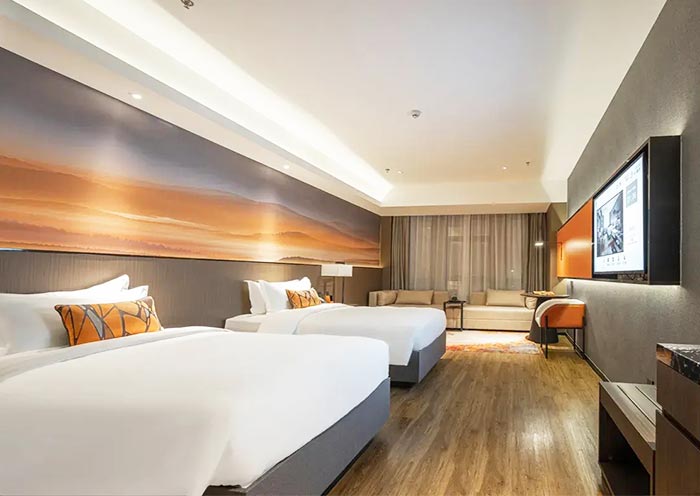

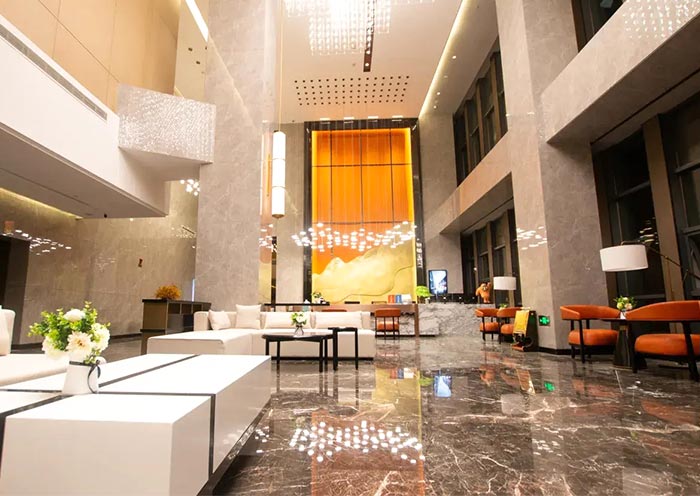
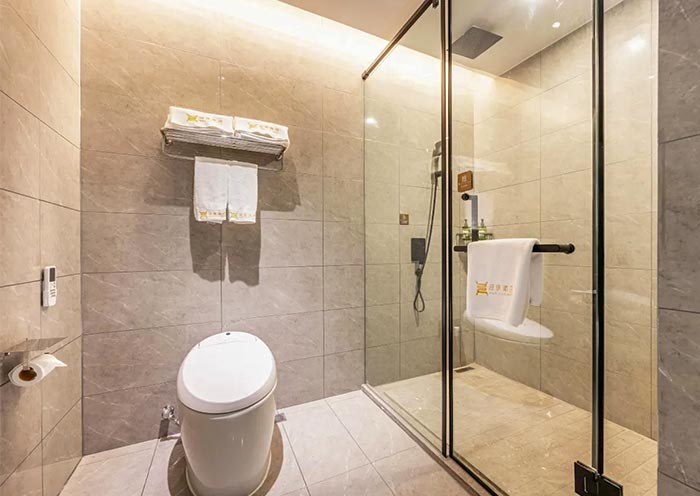
3 to 5 Star Hotels on the Silk Road Route Destinations:
Enjoy comfortable 3-star, 4 star or 5 star hotels along the Silk Road route, offering essential amenities for a relaxing stay after each day's adventures. These hotels provide a welcoming atmosphere with friendly service, perfect for Silk Road travelers.
Recommended Length to Stay (Xinjiang, Gansu & Qinghai)
To fully experience the Silk Road's highlights, we recommend a silk Road tour of 5-12 days. (1) One-Destination Deep Dive: Immerse yourself in the wonders of either Xinjiang (3-5 Days) or Gansu (5 Days). (2) Classic Silk Road Experience: Combine Xinjiang and Gansu together for a comprehensive exploration.(3) Ultimate Silk Road Journey: Extend your trip to include Qinghai and experience China’s diverse landscapes.
Standard Twin Room
Standard twin rooms on Silk Road group tours feature two comfortable beds, private bathrooms, and basic amenities. These rooms are designed for travelers seeking a cozy, convenient space to rest and recharge during their Silk Road journey.
Photo Gallery for This Itinerary
Latest Silk Road Tours Reviews from Our Customers

Sam Lin
Singapore
Date of Experience: Dec 24, 2024
Tour Customized by: Vincent
You May be Interested in This Tour: 8 Days Best Japan Group Tour: Japan Highlights & Hiroshima

Zhang Xin Hua
Malaysia
Visiting Japan’s Golden Route in October was incredible! From Tokyo's vibrant city life to the serene beauty of Mount Fuji, every stop was unforgettable. Kyoto’s temples and Nara’s friendly deer captured Japan’s charm, while Osaka’s food scene was a delight. The mix of tradition and modernity made it a perfect 7-day journey!
Date of Experience: Oct 26, 2024
Tour Customized by: Allan
You May be Interested in This Tour: 7 Days Japan Golden Route Tour in Small Group

Dan Z
Washington DC
Date of Experience: Aug 24, 2024
Tour Customized by: Rex
You May be Interested in This Tour: 7 Days Japan Kansai Tour with Hiroshima: Osaka, Kyoto, Uji & Nara
Price: Request
(Based on a private tour for two people. Price varies depending on program, travel date, number of people.)
Free Enquiry! You don’t need to pay for the reservation.
- United States (+1)
- Australia (+61)
- Singapore (+65)
- Malaysia (+60)
- Philippines (+63)
- Canada (+1)
- Italy (+39)
- Indonesia (+62)
- United Kingdom (+44)
- Spain (+34)
- Mexico (+52)
- Hong Kong (+852)
- Thailand (+66)
- United Arab Emirates (+971)
- New Zealand (+64)
- South Africa (+27)
- Germany (+49)
- Brazil (+55)
- India (+91)
- France (+33)
- Vietnam (+84)
- The Netherlands (+31)
- Saudi Arabia (+966)
- Ireland (+353)
- Argentina (+54)
- Switzerland (+41)
- Romania (+40)
- Pakistan (+92)
- Japan (+81)
- Portugal (+351)
- Bangladesh (+880)
- South Korea (+82)
- Puerto Rico (+1)
- Türkiye (+90)
- China (+86)
- Belgium (+32)
- Qatar (+974)
- Greece (+30)
- Taiwan (+886)
- Austria (+43)
- Poland (+48)
- Israel (+972)
- Chile (+56)
- Sri Lanka (+94)
- Nigeria (+234)
- Peru (+51)
- Colombia (+57)
- Hungary (+36)
- Nepal (+977)
- Denmark (+45)
- Bulgaria (+359)
- Norway (+47)
- Slovenia (+383)
- Sweden (+46)
- Kuwait (+965)
- Costa Rica (+506)
- Ecuador (+593)
- Venezuela (+58)
- Malta (+356)
- Croatia (+385)
- Tunisia (+216)
- Czechia (+420)
- Mongolia (+976)
- Bahrain (+973)
- Mauritius (+230)
- Papua New Guinea (+675)
- Cambodia (+855)
- Dominican Republic (+1)
- Luxembourg (+352)
- Finland (+358)
- Guatemala (+502)
- Myanmar (+95)
- Maldives (+960)
- Slovakia (+421)
- Laos (+856)
- Serbia (+381)
- Brunei (+673)
- Oman (+968)
- Macao (+853)
- Panama (+507)
- Morocco (+212)
- Jordan (+962)
- Georgia (+995)
- Fiji (+679)
- Bolivia (+591)
- Lithuania (+370)
- Bahamas (+1)
- Cyprus (+357)
- Latvia (+371)
- Bhutan (+975)
- Iraq (+964)
- Iran (+98)
- Kenya (+254)
- Jamaica (+1)
- Zimbabwe (+263)
- Azerbaijan (+994)
- Uruguay (+598)
- Estonia (+372)
- Andorra (+376)
- Cameroon (+237)
- Ghana (+233)
- Kazakhstan (+7)
- Nicaragua (+505)
- Egypt (+20)
- Russia (+7)
- Albania (+355)
- Réunion (+262)
- Montenegro (+382)
- Algeria (+213)
- Afghanistan (+93)
- Martinique (+596)
- Uganda (+256)
- Honduras (+504)
- North Macedonia (+389)
- Trinidad and Tobago (+1)
- Suriname (+597)
- Antigua and Barbuda (+1)
- Zambia (+260)
- Ukraine (+380)
- Armenia (+374)
- Barbados (+1)
- Belarus (+375)
- Palestine (+970)
- Lesotho (+266)
- Moldova (+373)
- Ethiopia (+251)
- French Polynesia (+689)
- Gambia (+220)
- Guam (+1)
- Gibraltar (+350)
- Isle of Man (+44)
- New Caledonia (+687)
- El Salvador (+503)
- Comoros (+269)
- Seychelles (+248)
- Chad (+235)
- Samoa (+685)
- Cook Islands (+682)
- Palau (+680)
- Paraguay (+595)
- DR Congo (+243)
- Solomon Islands (+677)
